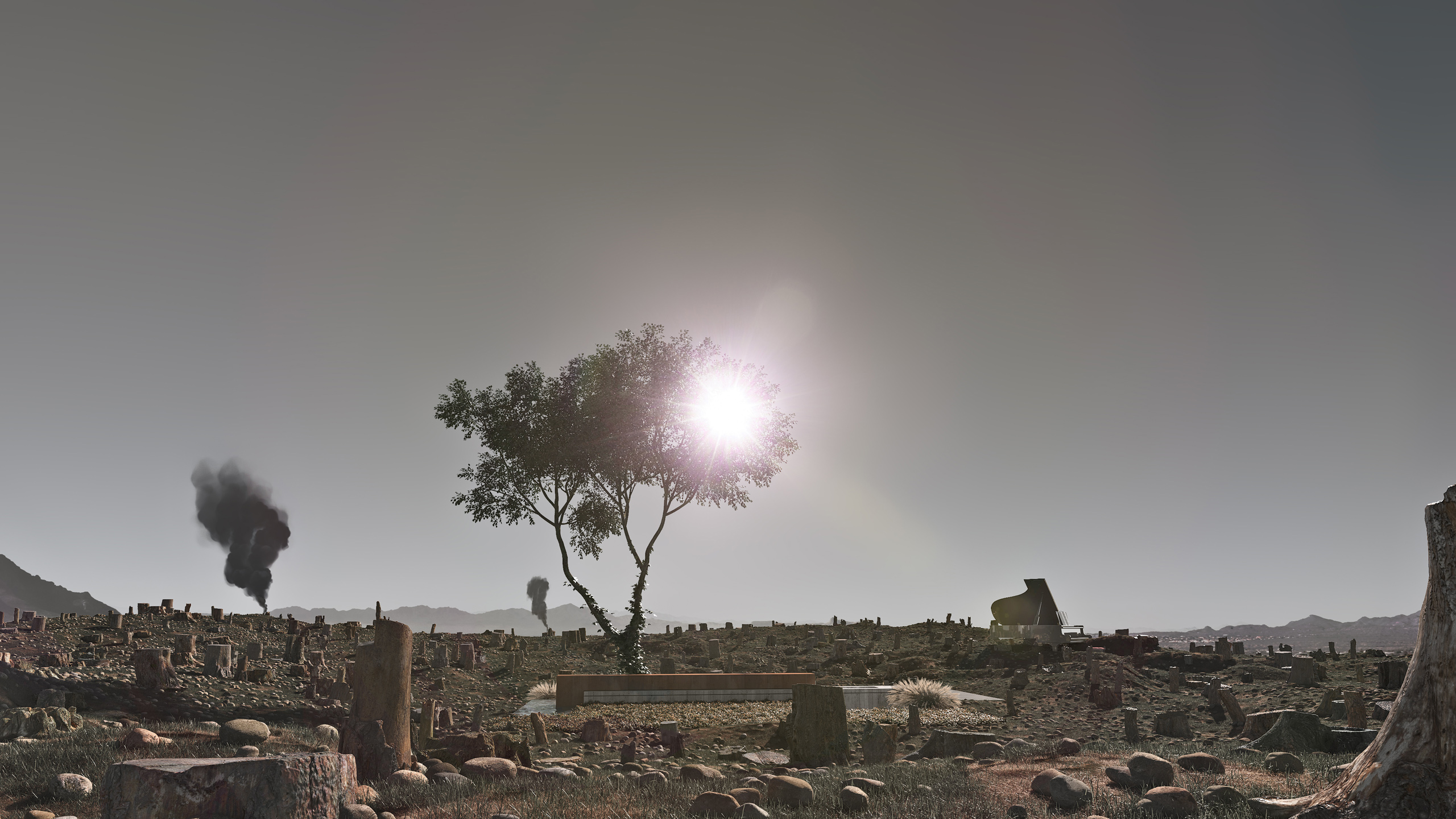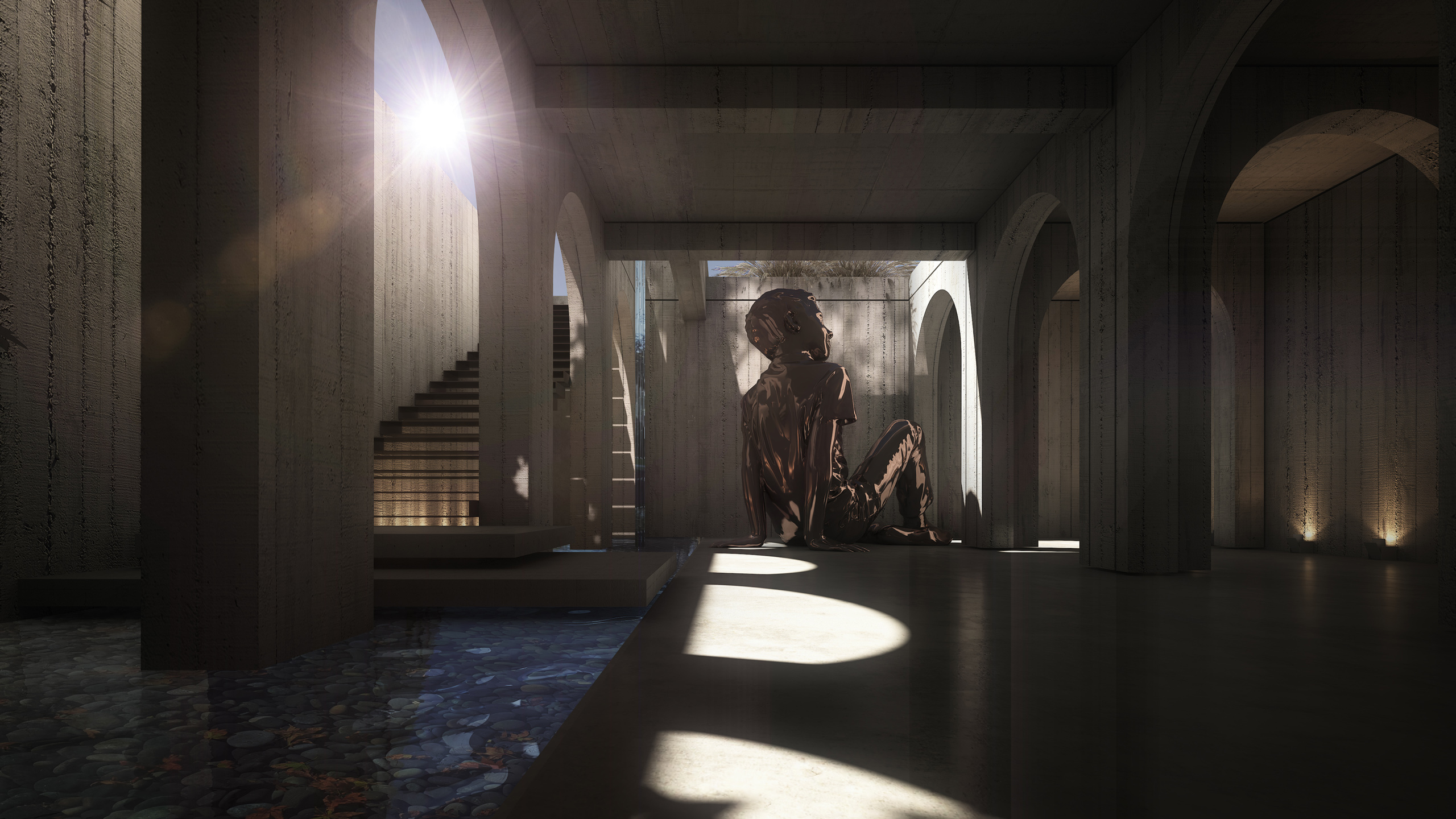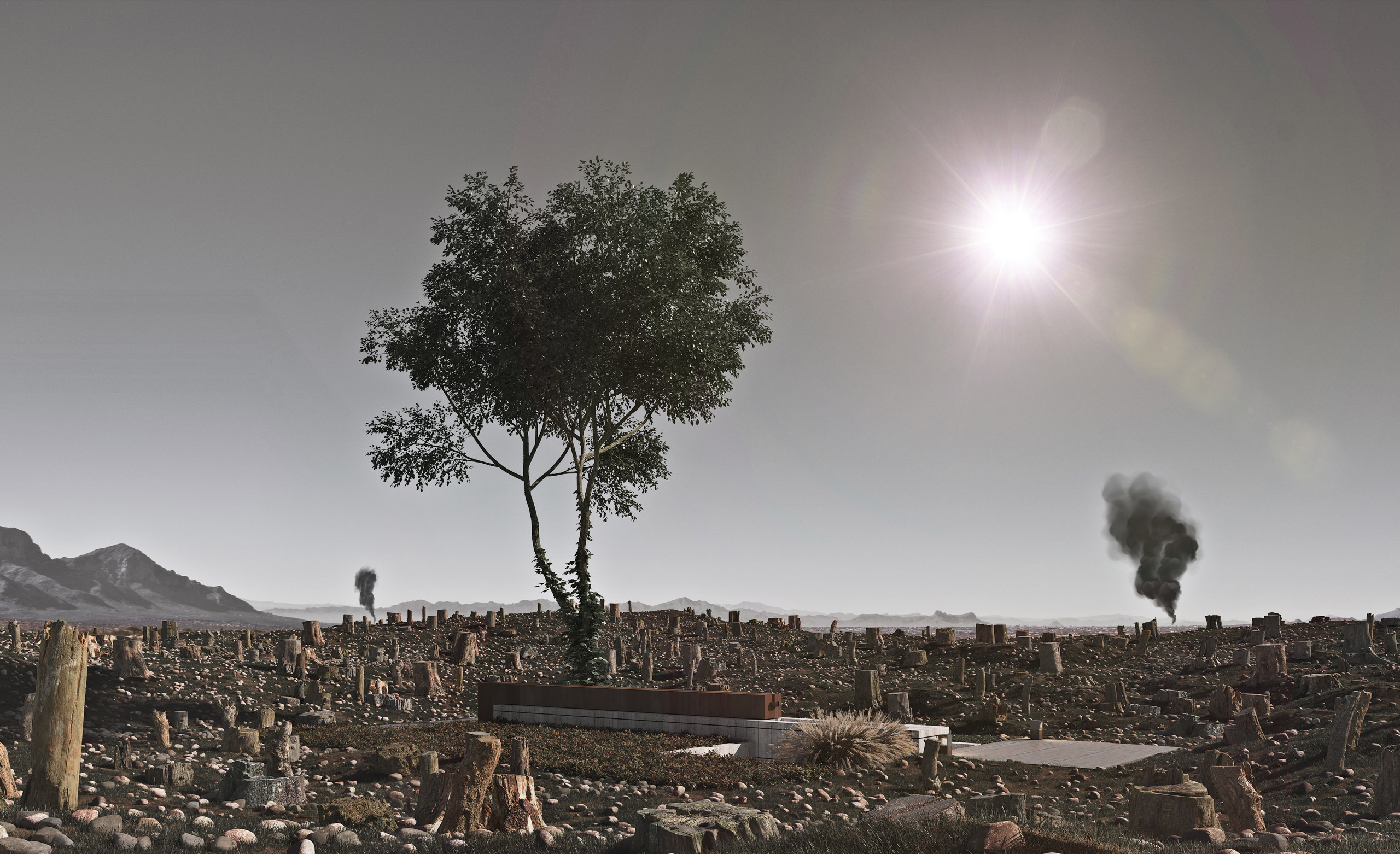
Trees provide numerous economic and social benefits, including the production of timber, fruits, and medicines, and the provision of recreational and cultural opportunities.
The pavilion is a subterranean structure comprised of concrete vaults, accessed via an iron staircase that spans across a body of water. Upon entering, one is met with a bronze sculpture of a young child seated and facing the wall, while peering through an opening in the ceiling above.
Surrounding the pavilion is a small body of water known as the “Ain”, with a solitary tree situated in the center, amidst a surreal backdrop that evokes the imagery of a post-apocalyptic world. The Siwan’s overarching purpose is to promote the importance of environmental conservation, with a specific emphasis on preserving the earth’s trees and ecological balance, in order to secure a brighter future for generations to come.
The current global environmental situation is a complex and pressing issue that affects every living being on our planet. The rapid pace of industrialization, urbanization, and human population growth has led to a wide range of environmental challenges, including climate change, deforestation, air pollution, water pollution, loss of biodiversity, and more.
The effects of these environmental issues are already being felt around the world, with rising global temperatures, more frequent and severe natural disasters, and negative impacts on human health and wellbeing. These problems are also disproportionately affecting marginalized communities, which often lack the resources and infrastructure to cope with environmental challenges.
While there is still much work to be done, there is growing global awareness and action toward addressing these environmental challenges. Governments, businesses, and individuals are taking steps to reduce greenhouse gas emissions, conserve natural resources, and promote sustainability. However, the scale and urgency of the problem require continued and increased action at all levels, from individual actions to collective international efforts.
Trees are essential for the continuation of the human race in numerous ways. First, they play a critical role in regulating the earth’s climate by absorbing carbon dioxide from the atmosphere and producing oxygen through photosynthesis. This process helps to mitigate the effects of climate change, which poses a significant threat to human survival.
Second, trees provide vital habitats for a wide range of plant and animal species, which are essential for maintaining the earth’s biodiversity. Many of these species, in turn, provide important ecological services such as pollination, pest control, and soil fertility, which are necessary for human food production.
Third, trees help to regulate the water cycle by absorbing and filtering rainwater, which helps to prevent soil erosion, maintain water quality, and reduce the risk of floods and droughts.
Finally, trees provide numerous economic and social benefits, including the production of timber, fruits, and medicines, and the provision of recreational and cultural opportunities.



